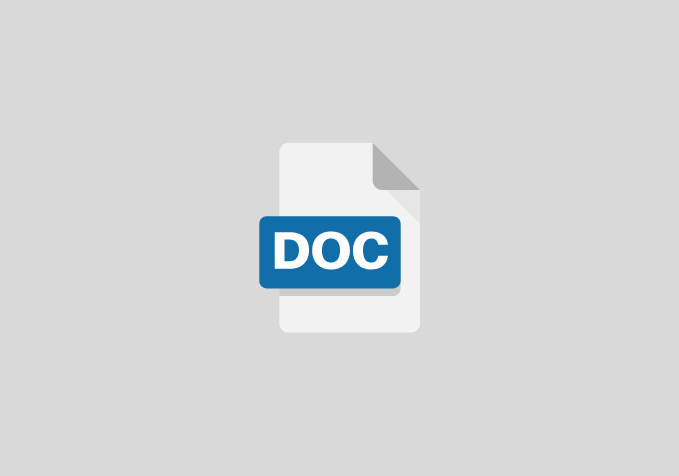Enhancing Nigerian Economy Through Wireless Internet Network
Chapter One
OBJECTIVE OF THE STUDY
- To determine the nature of wireless internet network
- To determine the role of wireless internet networks in enhancing the Nigerian economy
CHAPTER TWO
LITERATURE REVIEW
INTRODUCTION
This chapter gives an insight into various studies conducted by outstanding researchers, as well as explained terminologies with regards to enhancing Nigerian economy through wireless internet network.
The chapter also gives a resume of the history and present status of the problem delineated by a concise review of previous studies into closely related problems.
THOERETICAL FRAMEWORK
Although the origins of the neoinstitutional approach in economics are reflected in the early work of Ronald Coase (Coase 1937), the methodological framework and analytical apparatus, as well as the extension of its scope to other social sciences –like sociology, law, and political science – is of recent origin, all having taken place since 1960. This happens to coincide with the rise of the Internet – a new phenomenon which, despite a very short history of less than 50 years, has brought about fundamental changes in practically all aspects of human life – economic, social, cultural, educational, political, etc. (Abbate 1999). Neoinstitutional analysis can be helpful in understanding this development.
THE CONCEPT OF THE INTERNET
The Internet is the global system of interconnected computer networks that use the Internet protocol suite (TCP/IP) to link billions of devices worldwide. It is a network of networks that consists of millions of private, public, academic, business, and government networks of local to global scope, linked by a broad array of electronic, wireless, and optical networking technologies. The Internet carries an extensive range of information resources and services, such as mobile apps including social media apps, the inter-linked hypertext documents and applications of the World Wide Web (WWW), electronic mail, multiplayer online games, telephony, and peer-to-peer networks for file sharing.
The origins of the Internet date back to research commissioned by the United States government in the 1960s to build robust, fault-tolerant communication via computer networks. The primary precursor network, the ARPANET, initially served as a backbone for interconnection of regional academic and military networks in the 1980s. The funding of a new U.S. backbone by the National Science Foundation in the 1980s, as well as private funding for other commercial backbones, led to worldwide participation in the development of new networking technologies, and the merger of many networks.
CHAPTER THREE
RESEARCH METHODOLOGY
INTRODUCTION
This chapter covers the description and discussion on the various techniques and procedures used in the study to collect and analyze the data as it is deemed appropriate.
It is organized under the following sub-headings:
RESEARCH DESIGN
According to Asika (2009), research designs are often referred to as the structuring of investigation aimed at identifying variables and their relationships to one another. In this study, questionnaire serves as useful guide to the effort of generating data for this study. The survey research design through the administration of questionnaires was used for the study.
AREA OF THE STUDY
The study will be conducted in Lagos State, Nigeria. Lagos is the most populous city in Nigeria, the second fastest-growing city in Africa and the seventh in the world. The population of Lagos urban area, according to the Lagos State Government is 17.5 million, a number disputed by the Nigerian Government and judged unreliable by the National Population Commission of Nigeria.Lagos was reported in 2014 to have a metropolitan population of 21 million, making Lagos
POPULATION OF THE STUDY
The population of study consists of students of Lagos State University, Lagos. According to Wikipedia, 2015 61,000 enrolled for full time and part time programs in the school.
CHAPTER FOUR
DATA PRESENTATION, ANALYSIS AND INTERPRETATION
This chapter is devoted to the presentation, analysis and interpretation of the data gathered in the course of this study. The data are based on the number of copies of the questionnaire completed and returned by the respondents. The data are presented in tables and the analysis is done using Pearson correlation test.
CHAPTER FIVE
FINDINGS, CONCLUSION AND RECOMMENDATION
The objectives of the study were to
- To determine the nature of wireless internet network
- To determine the role of wireless internet network in enhancing the Nigerian economy
Findings from the survey revealed the following:
- That wireless internet network is high.
- The level of wireless internet network is high.
- The impact of wireless internet network on the economy is high.
REFERENCES
- Abbate, J. 1999. Inventing the Internet. Cambridge, MA: The MIT Press.
- Alchian, A., and H. Demsetz. 1972. Production, information cost, and economic organization. American Economic Review 62:777–795.
- Benkler, Y. 1998. The Commons as a Neglected Factor of Information Policy. Paper presented at 26th Annual Telecommunications Research Conference.
- Benkler, Y. 2002. Coase’s Penguin, or Linux and the nature of the firm. Yale Law Journal 112:369–446.
- Benkler, Y. 2004. Sharing nicely: On shareable goods and the emergence of sharing as a modality of economic production. Yale Law Journal 114:273–358.
- Benkler, Y. 2006. The Wealth of Networks: How Social Production Transforms


